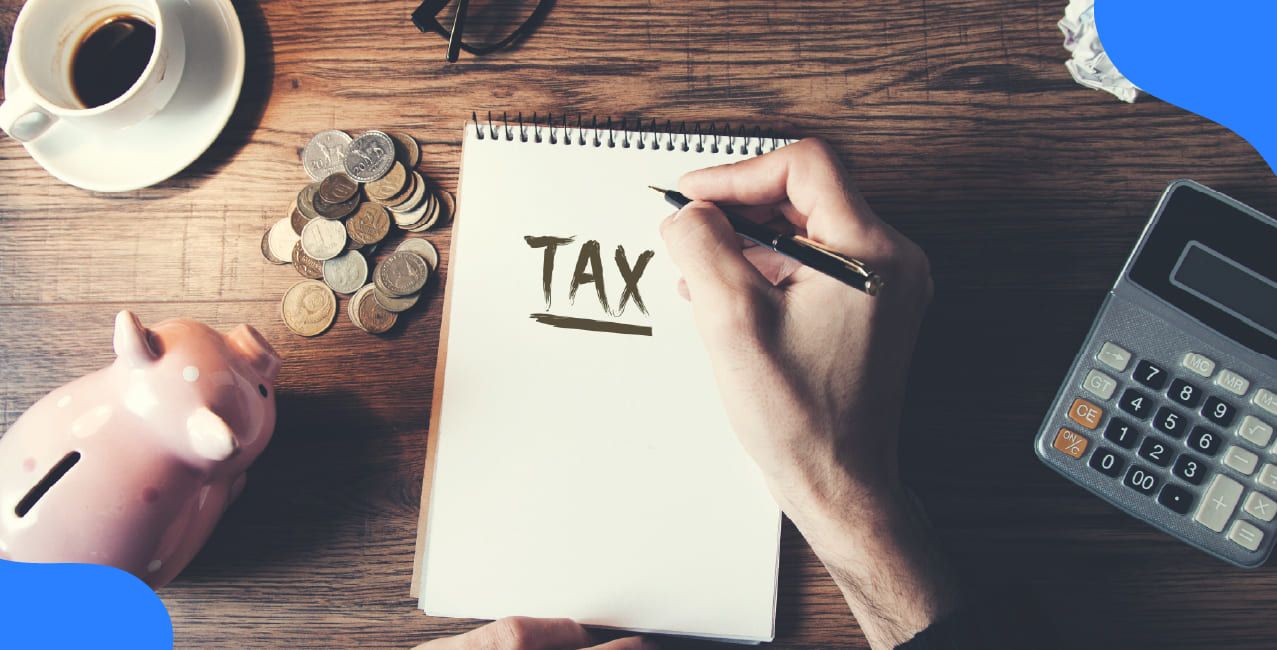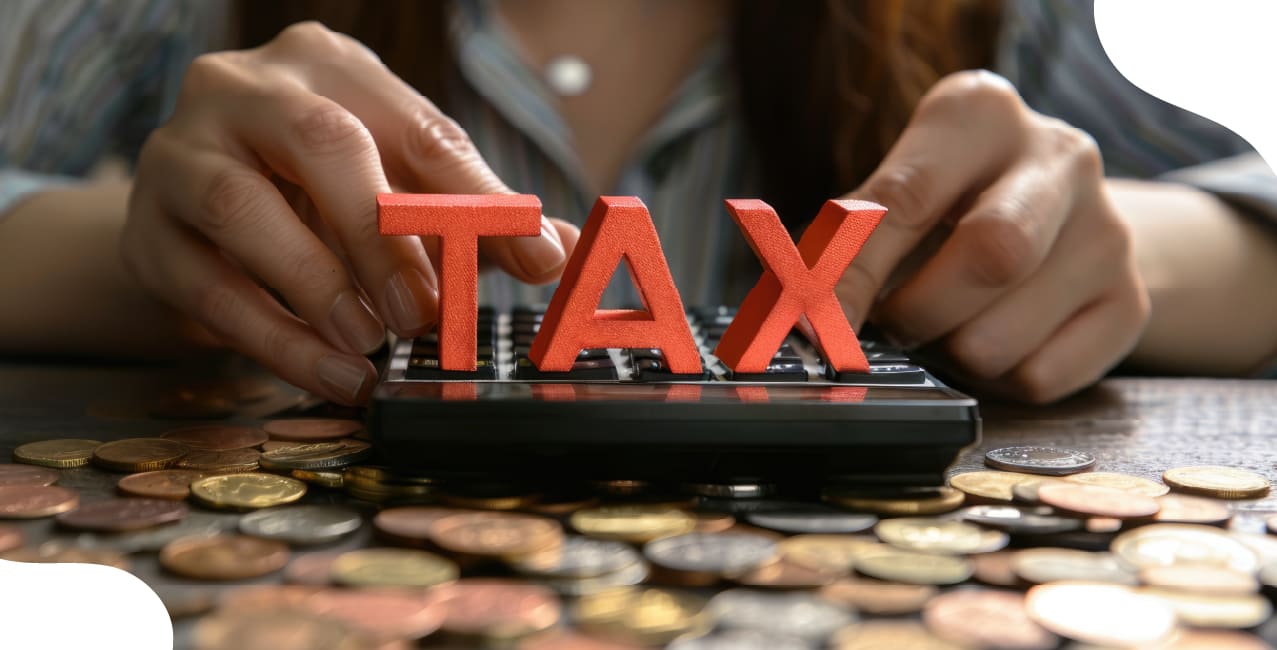
Author
LoansJagat Team
Read Time
6 Min
19 Sep 2025
Section 156 of the Income Tax Act – Notice of Demand Explained
The Income Tax Department sends a formal notice when you owe taxes. This Notice appears on the official e-filing website. It informs you of the amount you owe and when payment is due.
The official method by which the Income Tax Department notifies an assessee of a sum owed is found in Section 156 of the Income Tax Act. It functions as a statutory notice of demand, outlining the precise amount owed and the due date.
Example:
Dev, a businessman, filed his tax return saying he owed ₹2,00,000. But later, the tax officer reviewed it and decided Dev owed ₹2,50,000. So, the officer will send a notice telling Dev he needs to pay an extra ₹50,000, plus any interest that may apply. Dev will have 30 days to make this payment.
How the Notice u/s 156 Benefits Dev (the Businessman)
The table below outlines the key benefits this Notice provides for Dev:
The table explains how a demand notice is essential. It clarifies the situation, gives a deadline, and allows Dev to take legal action if needed.
In this blog, we’re going to talk about what a demand notice is and why you might get one under Section 156. Stay tuned for some common reasons!
(Bonus Point: Under Section 156, the Assessing Officer (AO) must serve the assessee with a notice of demand if any tax, interest, penalty, fine, or other amount is due as a result of an order that has been issued.)
Important Reasons for Getting a Notice Under Section 156
A Notice of Demand under Section 156 is a follow-up document issued after the completion of an assessment or order; it is not a stand-alone notice. The results of different proceedings that result in an additional tax liability are the common grounds for its issuance.
Example:
As a Chartered Accountant, Aman, it's essential to reassure clients when they receive a notice under Section 156. There's no need to panic! This notice is a formal message informing them of a final decision made by the tax department. It shows the amount they owe, based on earlier decisions.
The main thing to focus on is understanding why they received this demand in the first place, which usually comes from:
- Assessment and Reassessment: The most common reason for a tax demand notice is when a review of your tax return shows a difference between what you paid and what the tax officer thinks you owe.
For instance, if the officer decides that some of your business expenses can't be counted, your taxable income goes up, leading to a demand for more money.
- TDS (Tax Deducted at Source) Mismatch: If a client files their tax return claiming a TDS credit of ₹1,00,000 based on Form 26AS, but the tax department shows that the person who deducted the tax only paid ₹90,000, then there's a difference of ₹10,000.
This mismatch can lead to the tax department sending a notice (under Section 156) asking for the tax on that ₹10,000 difference.
- Undisclosed Income: If it turns out during a review that a client hasn't mentioned all their income sources, like money from a forgotten savings account or a profit from selling an asset, the tax department will adjust their records.
They'll then send a notice asking for the extra tax due, along with interest and possibly a penalty.
- Disallowance of Deductions or Exemptions: If a client claims a deduction under Chapter VI-A, like Section 80C, or an exemption under Section 10, such as HRA, the Assessing Officer (AO) will check if everything is in order.
If the AO finds that the claim is not valid because of missing papers or if the client doesn't qualify, the deduction won't be allowed. This means the client has to pay more tax, which leads to a notice demanding payment.
These are the main reasons why you received a notice under section 156 of the Income Tax Act.
How the Client Benefits From This Conversation
The following table summarises how our client benefits from this clarifying conversation:
This conversation reduces client anxiety and enables informed decision-making.
It’s crucial to understand why this matters. Getting a clear picture of the reasons can be very helpful. Let’s talk about what happens if you wait too long to respond to this notice (Delay/ Penalty for Delay).
(Bonus Point: To file your documents online, use the e-filing portal. If you have more than one document, zip them into a single folder before uploading. Just remember, the total size of everything in that zipped folder should not be more than 50 MB.)
Objective of Section 156 of the Income Tax Act
Section 156 aims to formally notify an assessee of a tax demand after an assessment by the Income Tax Department. To ensure clarity and enforceability, it includes information about the amount owed, the justifications for the demand (such as taxes, interest, or penalties), and the due date for payment.
For instance:
Sonu, a freelancer, received a notice under this section for ₹18,500 due to underreporting his income after a scrutiny assessment, directing him to pay within 30 days.
Table: The table breaks down the key details of Sonu’s tax demand notice:
Sonu gets a clear list of what he owes, making things transparent and helping him pay on time.
Now that we understand the purpose and structure of a demand notice under Section 156, let’s explore the TDS rates linked to such demands under Section 156.
TDS Rates Under Section 156
Section 156 of the Income Tax Act addresses the "Notice of Demand" for tax dues, including assessments, penalties, and interest, but does not specify the TDS rates.
TDS rates are covered in other sections, like Section 192 for salaries and Section 194 for dividends. If TDS is short-deducted or not deposited, the demand notice will include the recovered amount with interest and penalties.
For example:
Monu, a contractor, overlooked deducting TDS (under Section 194C) while paying his subcontractors. As a result, the tax department sent him a notice under Section 156 for the unpaid TDS, totalling ₹20,000, along with interest and penalties.
Table: The table outlines the components of Monu's demand notice due to TDS non-compliance:
The notice highlights the severe financial impact of TDS non-compliance, including interest and penalties.
Now that we’ve got a grip on how TDS-related demands are enforced under Section 156, let’s dive into what happens if these payments are delayed, including the potential consequences and penalties!
Consequences of Delay/ Penalty for Delay
Financial penalties are mandatory if a Notice of Demand under Section 156 is not complied with within the allotted time. Timely action is essential due to the severe repercussions, which exacerbate the initial liability.
If someone like Shikhar delays replying to a notice under section 156, he faces two main financial consequences on top of the original tax demand:
- Interest u/s 220(2): If Shikhar doesn't pay the amount he owes within 30 days, he will need to pay 1% simple interest each month on the outstanding amount. This interest will only be cancelled if the amount he owes is reduced or cancelled. Even if the Assessing Officer gives him more time or allows him to pay in parts, the interest still applies.
- Penalty u/s 221: If Shikhar is facing a penalty that could match his original amount owed, it's essential to know that he can still have his say. He should be allowed to explain his situation. Suppose he can demonstrate to the officer that his delay was caused by a legitimate reason, such as a serious financial emergency. In that case, he may not have to pay the penalty after all.
Recognising these penalties highlights the importance of acting quickly. Now, let's wrap things up and finish this blog with a conclusion!
Exemption under Section 156 of the Income Tax Act
The Notice of Demand, which is given when a taxpayer owes money for taxes, interest, penalties, or other amounts, is covered in Section 156.
In certain circumstances, a taxpayer may not receive or be required to comply with a demand notice under Section 156, even though the notice itself is typically required once a liability exists. These might be regarded as applicable exceptions:
Table: This table breaks down the example robustly
The circumstances in which a taxpayer is essentially exempt from receiving or responding to a Section 156 notice are highlighted in this table.
Understanding these exclusions guarantees clarity regarding when action is actually needed.The next section is the conclusion of the blog.
Conclusion
Receiving a tax notice can be intimidating, but it doesn't have to be. Think of a Section 156 notice as just a bill from the tax department. It tells you what they think you owe and why. It's important not to ignore it.
Instead, take some time to understand what it says, verify its accuracy, and respond promptly. This will help you keep things simple and avoid extra fines. Remember, acting fast can make a big difference!
FAQs
I can't pay such a large amount all at once. What are my options?
You can apply to your Assessing Officer to request payment in instalments. However, please note that interest under section 220(2) will still apply even if your instalment request is approved.
What if I completely disagree with this demand?
You have the right to appeal against the order that created this demand. The notice u/s 156 itself is not appealed; you appeal the original assessment order (e.g., under section 246A to the Commissioner (Appeals)).
Should I hire a CA if I get this notice?
It is highly recommended to consult a Chartered Accountant. A CA can help you understand the complex order, verify the calculation, guide you on the best course of action (pay or appeal), and represent you before the tax authorities.
I have already paid my tax. Why did I still get this notice?
This usually means the department's calculation differs from yours. Common reasons include them disallowing a deduction you claimed, a mismatch in your TDS details, or adding income they believe you didn't disclose.
Other News Pages | |||
About the Author

LoansJagat Team
‘Simplify Finance for Everyone.’ This is the common goal of our team, as we try to explain any topic with relatable examples. From personal to business finance, managing EMIs to becoming debt-free, we do extensive research on each and every parameter, so you don’t have to. Scroll up and have a look at what 15+ years of experience in the BFSI sector looks like.

Quick Apply Loan
Subscribe Now
Related Blog Post

LoansJagat Team • 22 Sep 2025
_of_Income_Tax_Act.jpg)
LoansJagat Team • 22 Sep 2025

LoansJagat Team • 22 Sep 2025